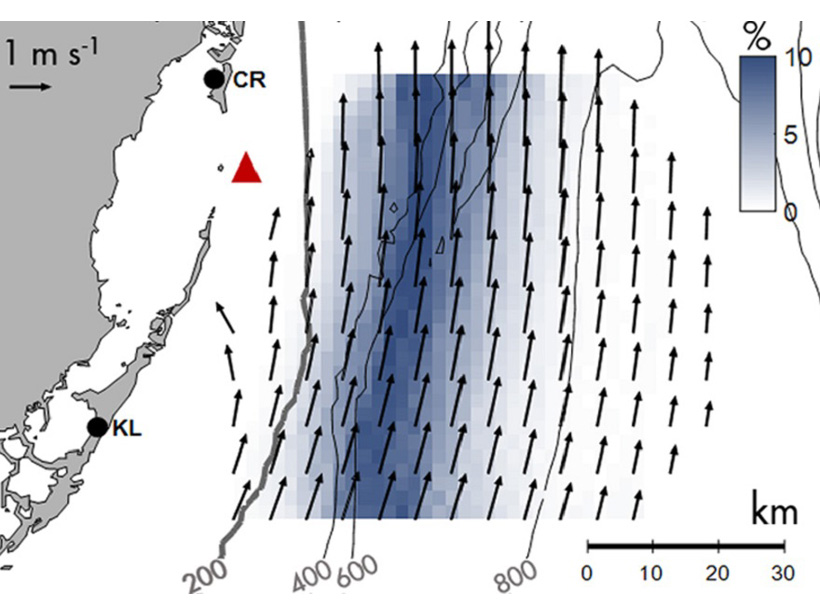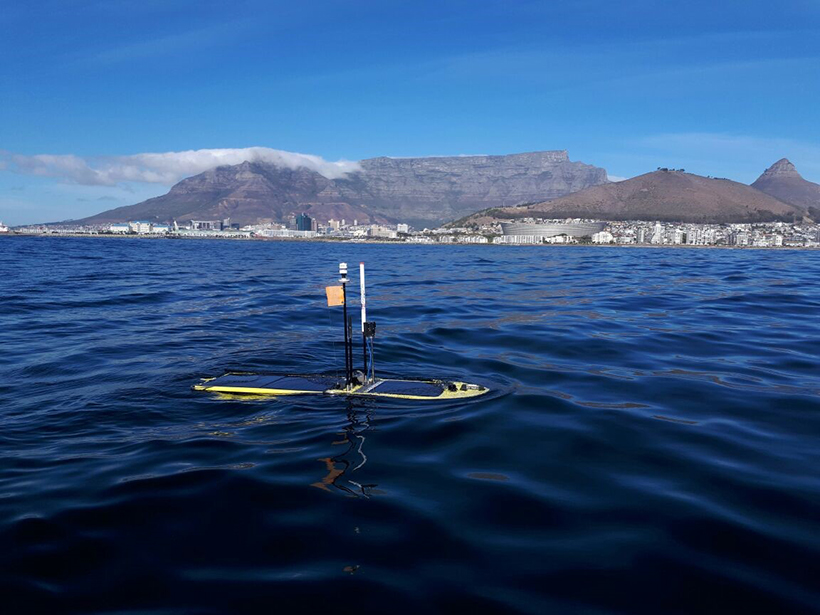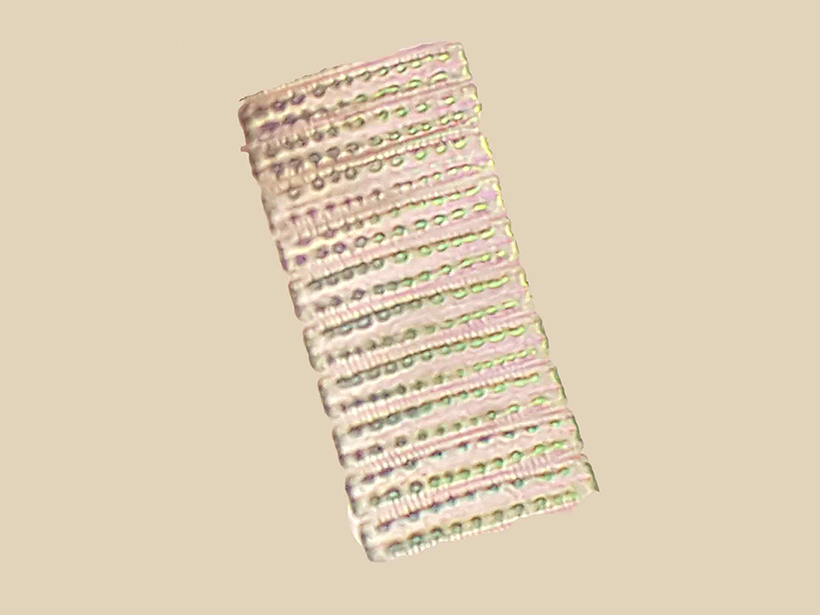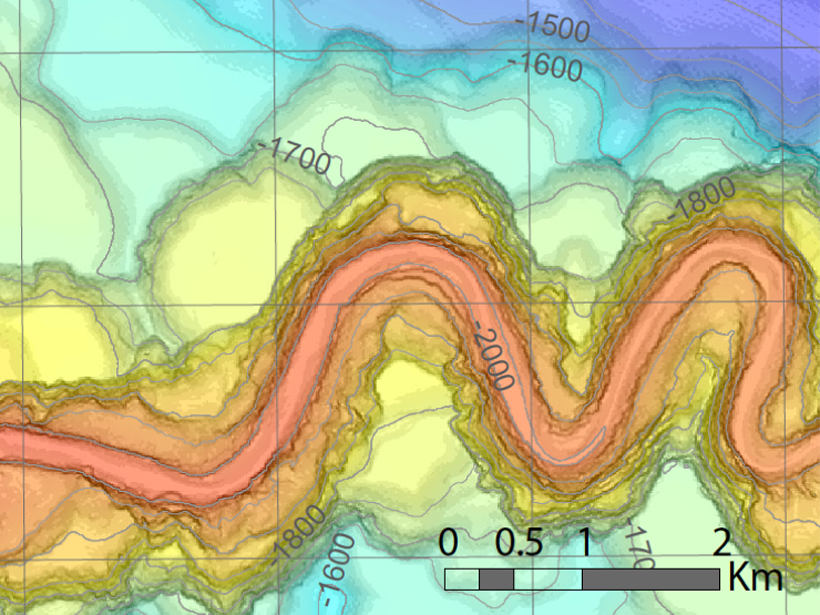A 3-D seismic analysis of Pleistocene iceberg gouges indicates that surface currents in the Norwegian Sea flowed northward and remained consistent during numerous glacial cycles.
currents
Energetics of Western Boundary Current Surface Flows Are Similar
Despite different wind forcing and air-sea heating conditions, the surface layer energetics of two Western Boundary Current systems in different ocean basins are surprisingly similar.
Exploring the Interplay Between Ocean Eddies and the Atmosphere
Ocean Mesoscale Eddy Interactions with the Atmosphere: A CLIVAR Workshop; Portland, Oregon, 17–18 February 2018
Ocean Gliders Ride the Research Wave in the Agulhas Current
Off the east coast of South Africa, robotic ocean gliders deployed in the Agulhas Current capture new data that help us better understand how energy dissipates in the ocean.
New Paths for Plankton in Warming Arctic?
Water flowing from the Pacific to the Atlantic could find new shortcuts, enabling plankton to survive the trip through the cold polar region.
A Complete Picture of Southern Ocean Surface Circulation
For the first time, researchers combine estimates of sea surface height and circulation patterns in both ice-covered and ice-free regions of the Southern Ocean.
Scientists Discover New Ocean Current off Madagascar
The warm and salty Southwest Madagascar Coastal Current influences upwelling that supports rich marine ecosystems along the southern coast.
Reversing Earth’s Spin Moves Deserts, Reshapes Ocean Currents
A climate model with reversed rotation of Earth helps climatologists and oceanographers understand why our planet is the way it is and reveals how different it could have been.
Chaos Beneath a Calm Sea
Seismic data help reveal fine-scale wave breaking, instability and turbulence in the ocean interior.
How Do Deep-Sea Gravity Currents Transport Sediment So Far?
The first field measurements of turbidity currents flowing around submarine channel bends indicate spiral flow plays a key role in keeping sediment suspended for hundreds of kilometers.










